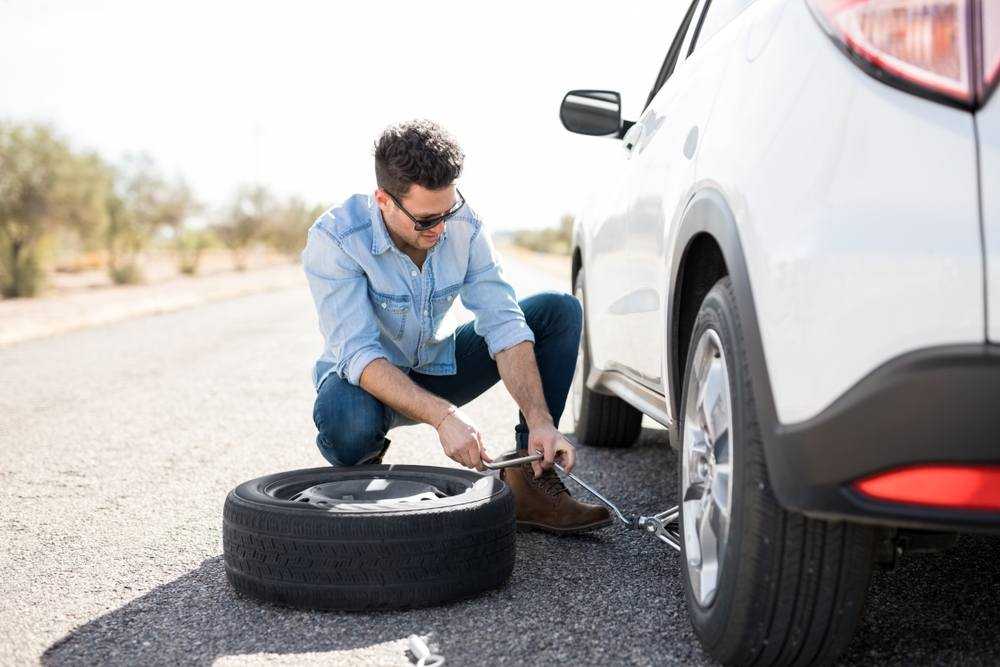Dealing with a flat tire can be a frustrating experience, especially if you're not sure how to handle it. But with the right knowledge and tools, you can change a flat tire like a pro and be back on the road in no time. This guide will walk you through the steps of changing a flat tire, the necessary tools you'll need, and some preventive measures to help you avoid flats in the future.
Tools You’ll Need
Before you start, make sure you have the following tools in your car:
- Spare Tire: Ensure it's properly inflated and in good condition.
- Jack: A hydraulic or scissor jack will work.
- Lug Wrench: This is usually included with your car’s spare tire kit.
- Wheel Wedges: These help prevent your car from rolling while you're changing the tire.
- Gloves: To keep your hands clean and protected.
- Flashlight: Essential for night-time tire changes.
Step-by-Step Guide to Changing a Flat Tire
- Find a Safe Location
- As soon as you realize you have a flat tire, slowly reduce your speed and find a safe, level area to pull over. Avoid stopping on a curve or near oncoming traffic. Turn on your hazard lights to alert other drivers.
- Apply the Parking Brake and Use Wheel Wedges
- Once parked, apply the parking brake to prevent the car from rolling. Place wheel wedges behind or in front of the tires to further secure the vehicle.
- Remove the Hubcap or Wheel Cover
- If your car has a hubcap covering the lug nuts, use the flat end of your lug wrench to pry it off. If your car doesn’t have a hubcap, skip this step.
- Loosen the Lug Nuts
- Use the lug wrench to loosen the lug nuts on the flat tire. Turn them counterclockwise. Don’t remove them completely yet; just break the resistance.
- Position the Jack and Lift the Vehicle
- Place the jack under the vehicle frame near the flat tire. Ensure the jack is in contact with the metal portion of your car’s frame. Raise the vehicle until the flat tire is about six inches off the ground.
- Remove the Lug Nuts and the Flat Tire
- Finish unscrewing the lug nuts and remove them completely. Keep them in a safe place. Pull the flat tire off the car and set it aside.
- Mount the Spare Tire
- Align the spare tire with the lug bolts and push it onto the hub. Screw the lug nuts back on by hand, tightening them as much as possible.
- Lower the Vehicle and Tighten the Lug Nuts
- Lower the car slightly so that the spare tire is in contact with the ground but the full weight of the car isn’t on it. Use the lug wrench to tighten the lug nuts in a star pattern to ensure even tightening.
- Fully Lower the Vehicle and Replace the Hubcap
- Lower the car completely and remove the jack. Give the lug nuts another round of tightening to ensure they are secure. If your car has a hubcap, replace it now.
- Check the Spare Tire Pressure
- Use a tire gauge to check the spare tire’s pressure. Inflate it to the recommended PSI if needed.
Safety Tips
- Always be aware of your surroundings: Ensure you're in a safe location away from traffic.
- Use hazard lights and warning triangles: Make your vehicle visible to other drivers.
- Never go under the vehicle: Even with the jack in place, it’s not safe to get under the car.
Preventive Measures to Avoid Flat Tires
- Regular Tire Inspections
- Check your tires regularly for signs of wear, damage, or foreign objects. Look for cuts, punctures, or any bulges in the tire sidewalls.
- Maintain Proper Tire Pressure
- Under-inflated or over-inflated tires can lead to blowouts. Use a tire gauge to check the pressure monthly and before long trips. Refer to your vehicle’s manual for the recommended PSI.
- Rotate Your Tires
- Regular tire rotation ensures even wear and extends the life of your tires. Most manufacturers recommend rotating your tires every 5,000 to 8,000 miles.
- Avoid Road Hazards
- Be cautious of potholes, debris, and uneven road surfaces. Driving carefully can prevent tire damage.
- Don’t Overload Your Vehicle
- Excess weight can put additional strain on your tires, increasing the risk of a flat. Follow your vehicle’s load capacity guidelines.
By following this guide, you can confidently handle a flat tire situation and take steps to prevent future flats. Regular maintenance and being prepared with the right tools will keep you safe and ensure your vehicle remains in good condition.
